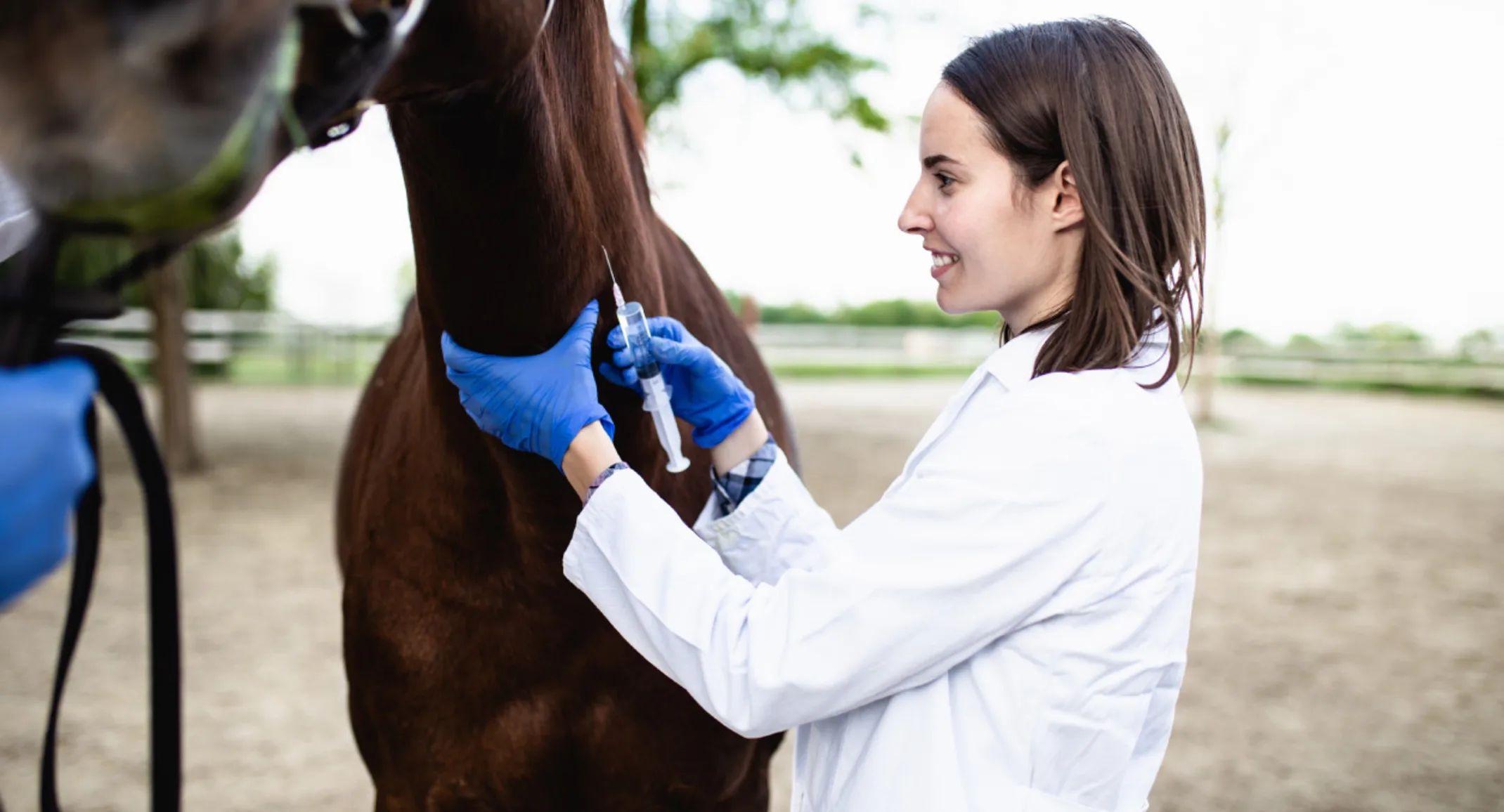Parasite Control and Strategic De-Worming
Equine Resources

Established habits die hard, and horse owners’ reliance on chemical parasite control is certainly well ingrained. Working to control internal parasites includes questions such as “How often?” and “Should the de-wormers be rotated?”. Established programs of de-worming horses every 60 to 90 days and rotating products, dates back the mid 1960s. These strategies were very effective at accomplishing the goal of reducing the clinical significance of the large strongyle.
However, through the continued use of frequent de-worming and the addition of daily de-wormers parasite resistance to many of the current de-wormers has developed. This recent development of parasite resistance has resulted in a change in the way horse owners, veterinarians, and the equine industry should approach the topic of equine de-worming.
Today the goal of de-worming is not to eliminate all internal parasites from all horses. This is a difficult concept for many horse owners and veterinarians to adopt. The goal should be to minimize (not eliminate) fecal shedding of parasite eggs into the environment, and minimize re-exposure to the horse. De-worming every horse on the same schedule, and the use of daily de-wormers is no longer the accepted strategy when it comes to parasite control. Current methods include performing fecal egg counts on individual horses.
Clinical studies have shown that approximately 20% of horses are responsible to shedding 80% of the parasite eggs. Looking at each horse individually allows us to determine which horses are low, medium, and high shedders. Based on the Fecal Egg Counts results we are able develop de-worming programs for each individual horse. Furthermore, Fecal Egg Count Reduction Tests may be utilized to monitor the effectiveness of the different de-worming products utilized for parasite control.
Not all de-worming products control all types and life stages of equine parasites. In addition, depending on the age of the horse, health status of the horse, and type of parasite targeted certain de-wormers may be more appropriate than others.
All internal parasites have a portion of their life cycle outside of the horse (larval stage). Pasture management is based on interrupting the life cycle before the horse becomes re-infected. Ample acreage allows horses to follow their own manure-shunning practice. Rotational grazing (areas are given two to several weeks without grazing) allows the larval stages to emerge and then die off. Rotating pasture with other livestock is helpful as none of the major equine parasite species is viable in cattle, sheep, or goats. Mowing and harrowing pastures exposes eggs and larvae to the drying effects of open air and sunlight. Just as daily stall cleaning is important, routine removal of manure from small turn-out areas or overstocked pastures lowers the opportunity for re-infestation.
Visit with one of our doctors or staff at Sapulpa Equine Hospital to develop an up-to-date, efficient, effective, and safe de-worming strategy that works for your program.
